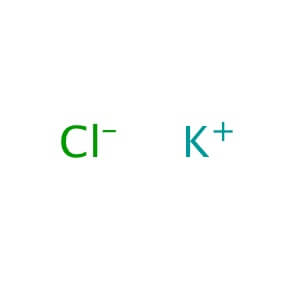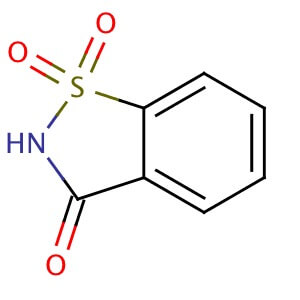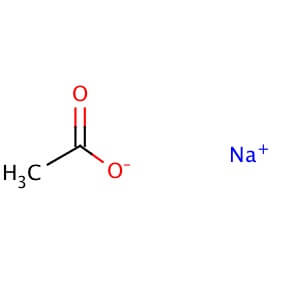Potassium Carbonate Anhydrous
CAS NO: 584-08-7
MOLECULAR FORMULA :- K2CO3
MOLECULAR WEIGHT :- 138.21 g/mol
SPECIFICATION BP USP Description White or almost white granular Powder hygroscopic. White or almost white granular Powder hygroscopic. Solubility Freely Soluble in water, practically insoluble in Ethanol (96%) – Identification (A) Reaction
(B) Reaction
(C) Reaction
A : The solution is strongly alkaline B: Test A gives the reaction of Carbonates &Bicarbonates.
C: Test A gives reaction of Potassium.
A: Test A gives the reaction of Carbonates. B: Test A gives reaction of Potassium.
Insoluble substances – The solution is complete, clear & Colorless. Heavy metals – NMT 5 ppm Calcium NMT 100 ppm – Iron NMT 10 ppm – Chlorides NMT 100 ppm – Loss on Drying NMT 5.0 % NMT 0.5 % Sulphates NMT 100 ppm – Organic Volatile Impurities – Meets the requirement Residual Solvents – Meets the requirement Assay 99.0 % – 101 % (on dry basis) 99.5 % – 100.5 % Potassium Chloride
CAS NO: 7447-40-7
MOLECULAR FORMULA: KCl
MOLECULAR WEIGHT: 74.55
Alternate Names: Potassium Chloride is also known as KCl. Application: Potassium Chloride is a common laboratory reagent and calibration standard for measuring electrical conducivity. Purity: >99% Description: Potassium Chloride is commonly used as a laboratory reagent as a standard. Potassium Chloride may be used as a calibration standard ionic solution for measuring electrical conductivity because Potassium Chloride solutions, when prepared carefully, produce repeatable measurable properties. Potassium Chloride is also a good source of ionic chloride, which should precipitate insoluble chloride salts upon addition to a solution of an appropriate metal ion. Oral Potassium Chloride is commonly used to replenish vital potassium in the body, and has also been shown to lower blood pressure. Potassium Chloride is commonly used in fertilizer. Physical State : Solid Solubility : Soluble in water (340 mg/ml at 20° C), alcohol (slightly), and ethanol (1 g/250 mL). Insoluble in ether, and acetone. Storage : Store at room temperature Melting Point : 770° C (lit.) Boiling Point : 1500° C (lit.) Density : 1.98 g/cm3 at 25° C (lit.) Refractive Index : n20D 1.49 Ki Data : CA IV: Ki= 90 µM (human); CA I: Ki= 6 mM (human); CA IX: Ki= 33 mM (human); CA V: Ki= 156 mM (human); CA II: Ki>200 mM (human) Potassium Nitrate
CAS NO: 7757-79-1
MOLECULAR FORMULA :- KNO3
MOLECULAR WEIGHT :- 101.1g/mol
SPECIFICATION BP USP Description White or almost white, crystalline powder or colorless crystals. White or almost white, crystalline powder or colorless crystals. Solubility Freely soluble in water, very soluble in boiling water, practically insoluble in ethanol (96 %) – Identification A. Reaction
B. Reaction
A. It gives reaction of nitrates. B. It gives reaction of Potassium
A. It gives reaction of nitrates. B. It gives reaction of Potassium
Acidity or Alkalinity NMT 0.5 ml of 0.01 M HCl or 0.01 M NaOH is required to change the color of the indicator. – Reducible Substances The solution does not become blue within 2 min. – Chlorides NMT 20 ppm NMT 300 ppm Sulfates NMT 150 ppm NMT 1000 ppm Limit of Nitrite – NMT 5 ppm Heavy metals – NMT 20 ppm Arsenic – NMT 3 ppm Lead – NMT 10 ppm Ammonium NMT 100 ppm – Calcium NMT 100 ppm – Iron NMT 20 ppm NMT 10 ppm Residual Solvents – Meets the requirements. Sodium NMT 1000 ppm NMT 1000 ppm Loss on Drying NMT 0.5 % – Assay 99.0 %-101.1 % (on dried basis) 99.0 %-100.5 % Potassium Phosphate Monobasic
CAS NO: 7778-77-0
MOLECULAR FORMULA :- KH2PO4
MOLECULAR WEIGHT :- 136.10 g/mol
SPECIFICATION IP BP USP Description White or almost white powder , crystalline powder , colorless powder or crystalline masses, efflorescent. White or almost white powder , crystalline powder , colorless powder or crystalline masses, efflorescent. Appearance of solution 4% w/v Solution is clear and colorless – Solubility Soluble in water , very soluble in boiling water and freely soluble in glycerol. – Identification (A) Reaction
(B) Reaction
(C) Reaction
A. Solution S is faintly acid
B. Reaction of Potassium
C. Reaction for Phosphates
A. Reaction of Potassium B. Reaction for Phosphates
pH (4% w/v solution in water) 4.2-4.5 – Sulphate NMT 50 ppm.
– Ammonium NMT10 ppm.
– Arsenic NMT 2 ppm. NMT 3 ppm Sodium NMT 1000 ppm – Iron NMT 10 ppm – Sulphate NMT 300 ppm – Chloride NMT 200 ppm – Lead – NMT 5 ppm Heavy Metal – NMT 20 ppm Fluoride – NMT 10 ppm Reducing Substances The colour of permanganate is not completely discharged – Residual Solvents – Meets the requirement Organic volatile impurities – Meets the requirement Insoluble substances – Max. 0.2% Loss on Drying at 1050C Max. 2.0% Max. 1.0% Assay Na2B4O7,10H2O 98.0 % – 100.5 98.0 % to 100.5 % Sodium Acetate Anhydrous
CAS NO: 127-09-3
MOLECULAR FORMULA : C2H3NaO2
MOLECULAR WEIGHT: 82.0
Description Synonyms Acetic acid sodium salt Product Information CAS number 127-09-3 Hill Formula C₂H₃NaO₂ Chemical formula CH₃COONa Molar Mass 82.03 g/mol HS Code 2915 29 00 Structure formula Image Quality Level MQ100 Applications Application Sodium acetate anhydrous 99.99 Suprapur®. CAS No. 127-09-3, EC Number2048238. Physicochemical Information Boiling point >400 °C (decomposition) Density 1.528 g/cm3 Flash point >250 °C Ignition temperature 607 °C Melting Point 324 °C (decomposition) pH value 7.5 – 9.2 (30 g/l, H₂O, 20 °C) Solubility 365 g/l Toxicological Information LD 50 oral LD50 Rat 3530 mg/kg LD 50 dermal LD50 Rabbit > 10000 mg/kg Safety Information according to GHS RTECS AJ4300010 Storage class 10 – 13 Other liquids and solids WGK WGK 1 slightly hazardous to water Storage and Shipping Information Storage Store at +2°C to +30°C. Specifications Purity (metallic) ≥ 99.99 % Assay (perchloric acid titration) ≥ 99 % Chloride (Cl) ≤ 5 ppm Phosphate (PO₄) ≤ 5 ppm Sulfate (SO₄) ≤ 20 ppm Al (Aluminium) ≤ 0.05 ppm Ba (Barium) ≤ 5.0 ppm Bi (Bismuth) ≤ 0.01 ppm Ca (Calcium) ≤ 0.10 ppm Cd (Cadmium) ≤ 0.005 ppm Ce (Cerium) ≤ 0.005 ppm Co (Cobalt) ≤ 0.005 ppm Cr (Chromium) ≤ 0.010 ppm Cs (Cesium) ≤ 2.0 ppm Cu (Copper) ≤ 0.005 ppm Fe (Iron) ≤ 0.05 ppm K (Potassium) ≤ 5 ppm La (Lanthanum) ≤ 0.005 ppm Mg (Magnesium) ≤ 0.10 ppm Mn (Manganese) ≤ 0.050 ppm Ni (Nickel) ≤ 0.010 ppm Pb (Lead) ≤ 0.005 ppm Rb (Rubidium) ≤ 0.5 ppm Sc (Scandium) ≤ 0.005 ppm Sm (Samarium) ≤ 0.005 ppm Sr (Strontium) ≤ 0.10 ppm Tl (Thallium) ≤ 0.005 ppm Y (Yttrium) ≤ 0.005 ppm Zn (Zinc) ≤ 0.010 ppm
Showing 13–18 of 37 items






